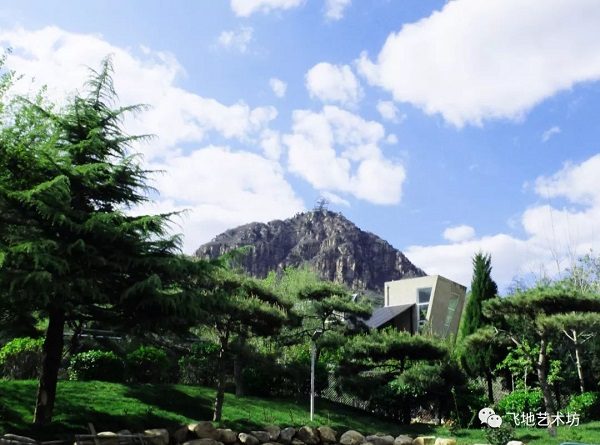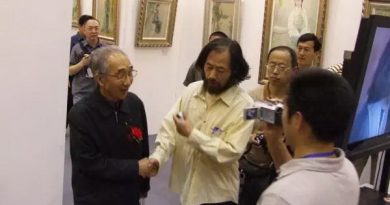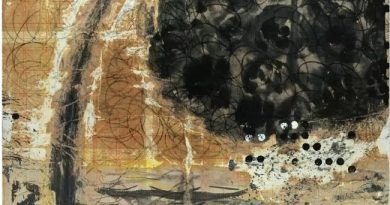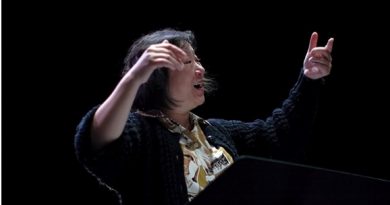艺术家王华祥和其历时20年打造的万圣谷美术馆(WanShengGu Art Museum)
《国际艺术新闻网》记者 朱晓晴

美术馆在现代人的日常休闲生活中一直扮演者着重要的角色。一般印象中,美术馆通常在城市的商业区与高校集中区,但也有一些特立独行的美术馆反其道而行之,它们在远离城市喧嚣的偏远地区与大自然中,有的依山傍水,有的藏匿于村落间,这些美术馆参考建筑与自然的美学规律建造而成。慕名而来的艺术与自然爱好者不仅可以一睹大自然中的建筑之美,还可以通过参观艺术作品获得精神与感官的享受,因此地域上的不便丝毫没有影响访客的热情。比如位于瑞士恩格丁山谷的苏施美术馆(Muzeum Susch)坐落在一个必须先按铃,火车才会停站的村落,自今年1月开馆以来,每天吸引着大约200位参观者,人数相当可观;再比如由美籍华人建筑师贝聿铭联同日本纪萌馆设计室设计的日本美秀美术馆 (Miho Museum) ,虽然位于偏远的滋贺县甲贺市,却成为当地人和来自世界各地游客们最爱的美术馆之一。
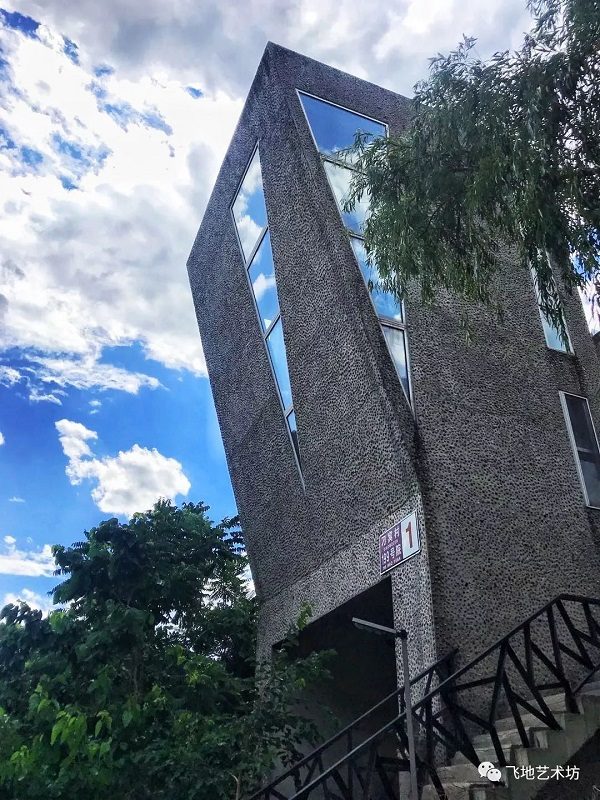
这次我想要介绍的是一座个性十足的山中美术馆——万圣谷美术馆。
万圣谷美术馆坐落于北京市平谷区黄松峪乡“石林峡”南的雕窝村199号,2019年5月1日起已面向公众开放,是一座具有国际视角和艺术史标准的艺术空间。美术馆总占地面积16000余平方米,室内展厅面积约2000平方米,由中国著名艺术家、教育家王华祥及其夫人历时20年打造而成。
万圣谷美术馆3个主展厅:
1.世界大师经典版画展厅,藏有文艺复兴以来的丢勒、慕夏,达利、纳兰霍,保罗,安德列,约舍夫,方力钧等中外大师和中国青年版画家的原作100多件;
2.高等美术院校专业教学范画资源库展厅,藏有世界名画复制精品140余件;
3.当代艺术展厅,不定期举办中外艺术家的个展或联展。

万圣谷美术馆主要功能为艺术展览、艺术收藏、艺术培训以及与国内外艺术家之间的交流。馆内设特色餐饮、酒吧、艺术民宿、婚庆、会议、小型音乐会、生日派对、模特及服装表演、亲子娱乐、艺术欣赏与收藏培训等。
万圣谷美术馆的目标:
1.让国际和国内最好的艺术品落地,成为百姓日常生活的重要组成部分;
2.让都市里辛苦劳碌的人们有一个“暂隐山林”的去处;
3.让有志于绘画艺术的人在这里打下坚实的基础;
4.让少年儿童置身大美的自然之中,零距离地接触飞禽走兽和花鸟虫鱼;
5.让展厅、客厅和餐厅满足人们的肉体之胃和精神之胃。

万圣谷美术馆具体信息:
艺术画廊:400平方米的聚会厅(18-24席聚会桌,8-12席餐桌,6-8席餐桌,沙发休闲区2个,茶台,投影,三角钢琴);
健身长廊: 跑步机,多功能健身器材,单车,沙袋,乒乓球台,投篮机;
50平方米阁楼阅读区;
70平方米小型会议室;
200平方米室外休闲区: 休闲烧烤、小型儿童篮球场,羽毛球场;
美术馆院内泳池盛夏开放,需预约(电话13801333448)。

作为万圣谷美术馆首任馆长及艺术总监的王华祥在谈及设计建造这间美术馆的初衷时,他说:“ 1999年我去法国巴黎做访问学者,在那里我看到法国到处是美术馆,歌剧院和各种名人故居。法国人除了和中国人一样忙于吃喝,他们还有艺术,但艺术不是专业艺术家的职业,不是少数人的墙上补丁和奢侈品,而是他们的生活中与生俱来的部分,甚至于说,艺术就是生产力。如果没有巴黎圣母院的建筑,那条旁边的河就不是塞纳河;如果没有卢浮宫,奥塞和蓬皮杜,那巴黎就不是巴黎;如果没有巴黎,那法国香水就是臭水;换句话说,如果没有艺术,那法国就不是法国。我的心受到了很深的撞击,暗下决心要建一个美术馆,因为我心里是存有一份五千年中华文明的骄傲基因的,我不能接受当时一心追求财富但却是“文化沙漠”的中国现状。自那时起我开始收藏艺术作品,把所有的钱都投入到美术馆的选址和营建之中,历时20年,像蝼蚁搬家一样,一点一滴聚沙成丘,把一个荒芜的不毛之地打造成一个顺应国运、利用自然而就地取材、发挥艺术家的审美与想象力、借鉴西南羌族的堡垒结构和欧洲山谷城墙粗旷气质的地方”。


王华祥相关信息:
出生于贵州。中央美术学院造型学院副院长,国际学院版画联盟主席,中央美术学院版画系主任,博士生导师,中国艺术研究院中国版画院副院长,西安美术学院客座教授,万圣谷美术馆馆长,江苏版画院名誉院长,飞地艺术坊名誉校长。中央美术学院版画系毕业后留校任教。1989年作品《贵州人》参加全国第七届美展获金奖。作品多次被国内外美术馆收藏。
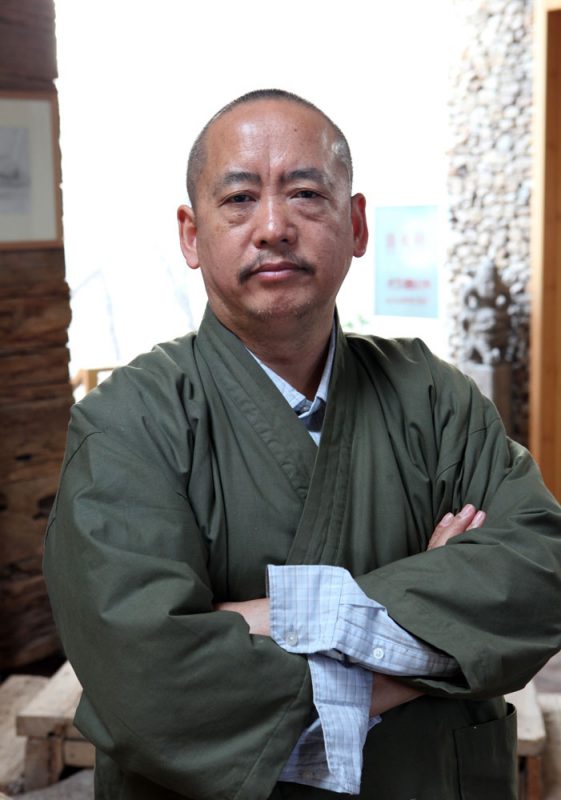
Artist Wang Huaxiang and the Museum that took Him 20 Years to Design and Build —WanShengGu Art Museum
Art museums have always played an important role in daily leisure life. In general, art museums are built in city centers and university areas. However, there are maverick museums that do the opposite, they are situated in remote areas and nature far from the hustle and bustle of the city ,either located in the mountains and rivers or sit in the villages. These museums are built with reference to the aesthetic laws of architecture and nature,visitors can not only see the beauty of architecture in nature, but also enjoy spiritual and sensory pleasure by visiting art works. Therefore, geographical inconvenience does not affect the enthusiasm of these visitors at all. For example, the Susch Museum in Enggdin Valley, Switzerland, has attracted about 200 visitors a day since its opening in January in a village where the train stops only after ringing the bell. Another example is the Miho Museum, designed by the Chinese-American architect I. M. Pei and the design studio of Jimeng Museum in Japan, Although located in the remote city of Kaga, Shiga Prefecture, it has become one of the favorite art galleries of the local people and of the tourists from all over the world.
This time I would like to introduce a very special art museum, which was designed by the famous Chinese artist Wang Huaxiang and his wife; which have taken them 20 years to finish — the WanShengGu Art Museum.
WanShengGu Art Museum, an art space with international perspective and art history standards, is located in the south of Shilin Gorge, Huangsongyu Township, Pinggu District, Beijing. It has been open to the public since May 1, 2019. The Gallery covers an area of more than 16,000 square meters. The indoor exhibition hall covers an area of about 2,000 square meters.
There are three main exhibition halls:
1.The world master’s classic Printmaking Exhibition hall, which contains more than 100 original works by Diller, Muxia, Dali, Naranho, Paul, Andre, Joseph, Fang Lijun and other Chinese and foreign masters and young printmakers since the Renaissance.
2.The exhibition hall of the professional teaching model painting Resource Bank of art colleges and universities has more than 140 world famous painting reproductions.
3.Contemporary art exhibition halls hold individual or joint exhibitions of Chinese and foreign artists.
Its main functions are art exhibition, art collection, art training and communication with national and international artists. Built-in featured catering, bars, art accommodation, weddings, meetings, small concerts, birthday parties, models and costume performances, parent-child entertainment, art appreciation and collection training.
Its objectives are:
1.To make the best international and domestic artworks land an important role in people’s daily lives;
2.The hard-working people in the city can have a temporary escapement ;
3.To let those who aspire to the revival of painting lay a solid foundation;
4.Children and adolescents can place themselves in the beauty of nature, living with birds, animals, flowers, birds, insects and fish;
5.The exhibition hall, living room and dining room can satisfy people’s physical and emotional needs.
WanShengGu Art Museum has a 400- square meters gathering hall including 18-24 persons gathering tables, 8-12 persons bigger dining tables, 6-8 persons small dining tables, 2 sofa leisure area, tea table, projection, triangular piano),a fitness corridor (treadmill, multi-functional fitness equipment, bicycle, sandbag, table tennis table, shooting machine), a 50- flat attic reading area, a 70- flat small-sized conference room; a Independent kitchen, a 200- square meters outdoor recreation area (leisure barbecue, small children’s basketball court, badminton court) and a indoor swimming pool( open in mid-summer, reservation required).
WanShengGu Art Museum is designed by Mr. Wang Huaxiang, Vice President of the Central Academy of Fine Arts, Chairman of the International Academy Printing Union, famous artist and educator. He was the first honorary curator and art director. Speaking about his original intention of building the gallery, he said: “In 1999, I went to Paris as a visiting scholar in France, where I was deeply stimulated and shocked: There are countless of art galleries, museums, opera houses, and former residences of celebrities in France. Just like the Chinese, the French love eating and drinking. However, the difference lies in the French people’s love for art. Art is not the profession of professional artists, not the wall patches and luxuries of a few people, but an indispensable part of their lives, or even say, art is a productive force. If there were no buildings in Notre Dame de Paris, the river next to it would not be Seine River; if there were no Le Louvre Museum, Oscar and Pompidou, then Paris would not be Paris; if there was no Paris, the French perfume would be smelly water; in other words, if there was no art, then France would not be France.
My self-esteem was deeply stimulated or impacted and I secretly resolved to build an art museum. I could not accept the situation of China then,which was a kind of “cultural desert”; devoted solely to making a fortune. Since then, I began to collect works of art and put all my money into the site selection and construction of the gallery. It took 20 years, like the ants moving, to gather the sand into the dunes bit by bit, transforming a barren place into the museum now. Utilizing nature to draw materials effortlessly, allowing the artist’s to seize aesthetics and imagination by drawing inspiration from the fortress structure of the Qiang people in southwest China and the rough temperament of the walls of the valleys in Europe for the creation of the WanShengGu Museum”.
Wang Huaxiang’s related information:
Wang Huaxiang is the vice-president of the School of Fine Arts, the president of the International Academy of Fine Arts, the chair of the Printing Department of the Central Academy of Fine Arts, the doctoral supervisor, the vice-president of the Chinese Printing Academy of the Chinese Academy of Fine Arts, the visiting professor of the Xi’an Academy of Fine Arts, the director of the WanShengGu Art Museum, the honorary president of Jiangsu Printing Academy, and the honorary School of Long.
He was born in Guizhou province, China , graduated from the Printing Department of the Central Academy of Fine Arts and then remained in the school for teaching. In 1989, His art work “Guizhou People” participated in the 7th National Art Exhibition and won a gold medal. His works have been collected by domestic and overseas art galleries for many times.

